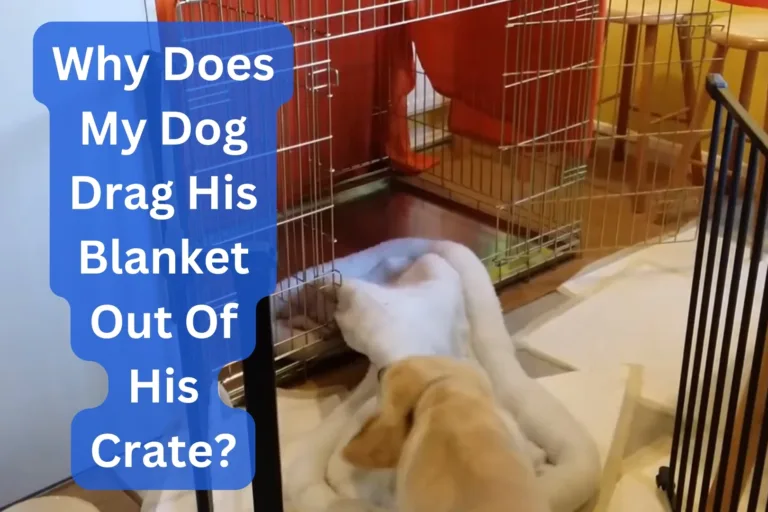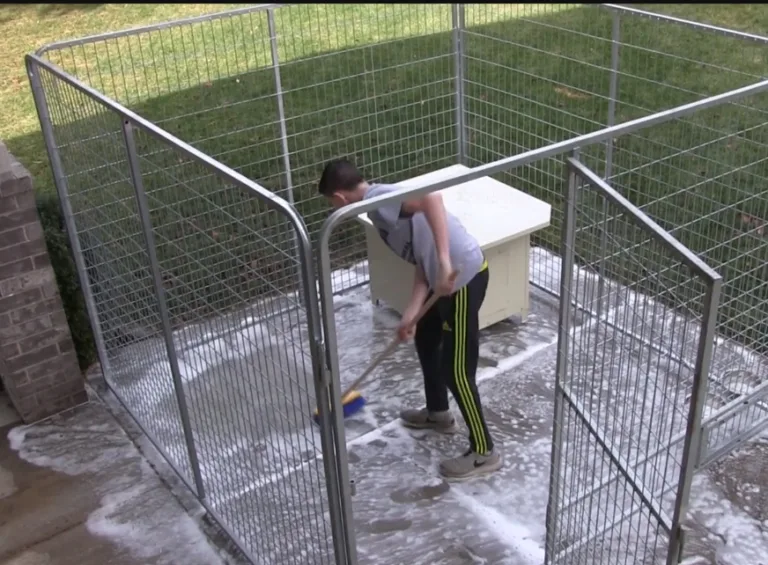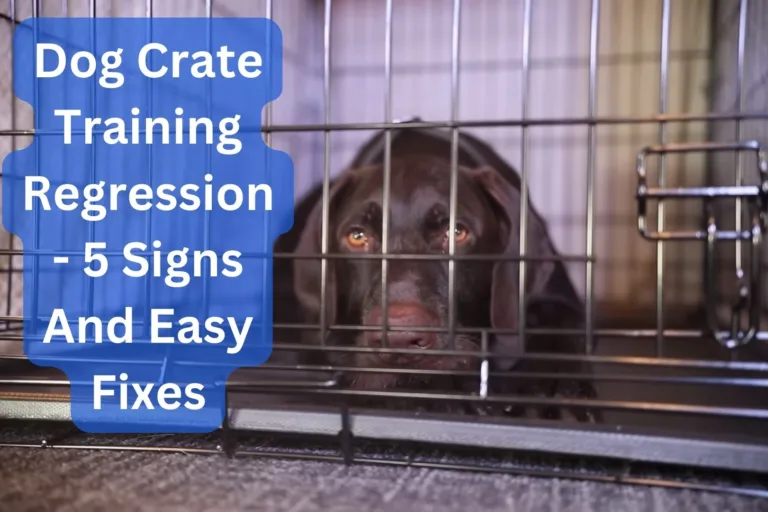How Long to Let Puppy Cry in Crate – Pro Advice
Imagine you’ve just found the cutest little furry puppy and decided to bring him home. Everything’s dandy and wholesome on the ride back home.
Your puppy loves you, and you love him just as much.
Everything’s going great, and you start thinking about all the fun you’ll have with the newest addition to your family until you put him in his crate.
At first, he seems hesitant to go in and then starts whining as soon as you’re out of eyeshot. How do you stop your puppy from crying, then?
More importantly, how long to let your puppy cry in a crate?
The right thing to do here is to stay close to your pup for a lengthy period and only leave when you’re sure he’s tired enough to sleep.
If that doesn’t work, it’s time to bring him out of his crate and reintroduce it to him gradually.
Not satisfied with that answer?
Make sure you take a gander at the guide below as we discuss why your pup might be acting this way and come up with suitable solutions.
Table of Contents
What to Do When My Puppy is Crying in Crate?

Realistically, there are only two things you can do to stop your puppy from crying while he’s in his crate. Both of these are related to the initial query: How long to let a puppy cry in a crate?
The first is ensuring you remain close to him or within his line of sight.
This can be quite calming for a puppy suffering from separation anxiety. If that fails, then you might just have to ignore him for a while.
We know you love him dearly and can’t bear to see him cry, but it’s all a part of his self-soothing process.
He should eventually stop when he realizes that he can’t receive your attention in this manner.
If you start catering to his whims every time he cries, he’ll never be able to distinguish that it’s bad behavior.
Should My Puppy Crying in His Crate be Considered as Normal Behavior?
Yes, it is completely normal for a puppy to cry in his crate for the first few weeks after you bring him home.
Puppies normally don’t get sold or adopted by pet parents until they become 8 weeks old.
Till that time arrives, they’re used to spending every waking moment with their mother and siblings.
Therefore, it can be a huge change for a young puppy when he’s brought to a new home where he has to sleep alone, which can be stressful.
And the only way for him to display that stress is by barking or whining loudly until he’s no longer left alone.
Why Do Puppies Cry in Their Crate?
As awful as it may be for you, you must get used to your puppy crying in his crate, at least during his first few weeks. But why is he crying? Have you done something wrong?
In most cases, no, because a puppy can cry in his crate for multiple reasons.
As we mentioned before, he may be crying because he’s been separated from his littermates and misses the warmth they bring.
Alternatively, he could be crying because it’s his first time living in a crate, and he’s wary of his surroundings.
Another reason could be that you’re not in his line of sight, and his separation anxiety is kicking in.
Signs Your Puppy May Be Having Separation Anxiety

Source: CertaPet
Separation anxiety is a very common phenomenon in dogs that can have multiple reasons behind it.
In this section, we’ll discuss some of the early symptoms of separation anxiety, its potential causes, and ways to treat it.
Puppy Separation Anxiety Symptoms

We already know that long bouts of crying, whining, or barking can be a potential indicator of separation anxiety in dogs.
However, there are other signs you can look out for as well. His body language, for one, can give him away.
An anxious dog usually has furrowed brows, a tucked tail, and pinned-back ears.
To add to this, he’ll be constantly showing you the puppy eyes (when his eyes seem like they’ll bulge out of their sockets).
You’ll also see him continuously pacing and panting when he’s in his crate, and he may even wet the bed or potty in his crate without any control.
Lastly, one of the classic signs of separation anxiety is when a dog starts chewing or biting his crate.
Causes of Separation Anxiety
The central cause of separation anxiety in dogs can be traced all the way back to their pack mentality and how they enjoy following each other.
When you bring a new pup home, he immediately starts believing you’re a part of his pack.
That’s why you’ll have noticed that he follows you from room to room when he’s out of his crate and energized.
That is also why he cries when he’s left alone in his crate, and the door is shut because he can’t be near you or see you.
The Impact of Separation Anxiety on Your Life
Living your day-to-day life with a constantly distressed puppy can be bad for you in more ways than one.
Your social life becomes non-existent as you can’t leave the house without taking your puppy with you.
Your neighbors get bothered with you because of all the fuss your dog makes when you leave him alone in his crate.
Even working from home can be difficult due to how much noise your pup makes.
You can’t even remove the crate altogether because you don’t want your dog to grow up thinking that he can’t be away from you for even a second.
Treating Puppy Separation Anxiety
The only way to treat separation anxiety is to gradually make your pup work through the distress and anxiety he feels when you’re away from him.
It’s hard work because you have to stay close to him for a long time when he’s initially put in his crate.
But the key is to gradually increase his alone time and ignore him while he’s crying.
We’ve outlined the entire process you can use to train him to get over his anxiety completely in the next few sections. So, make sure you check them out.
How To Get a Puppy to Stop Whining in Their Crate
As pet parents, we often wonder how long to let puppies cry in a crate?
Well, let us rephrase this question a bit, shall we?
“How do you get a puppy to stop whining in his crate?” And we’ve come up with some answers as well:
Ignore Their Crying
While we won’t advise leaving him completely alone when he starts to cry, you will have to ignore your pup for a significant period.
He’ll try plenty of different things when the anxiety kicks in, including biting his crate, trying to escape the crate, and barking as loud as possible.
It is vital that you don’t show any reaction to his antics and wait for the self-soothing process to take its course.
It should take your puppy about 15 minutes to somewhat start settling down once he realizes his crying isn’t having any effect.
Release Your Pup for a Short Spell
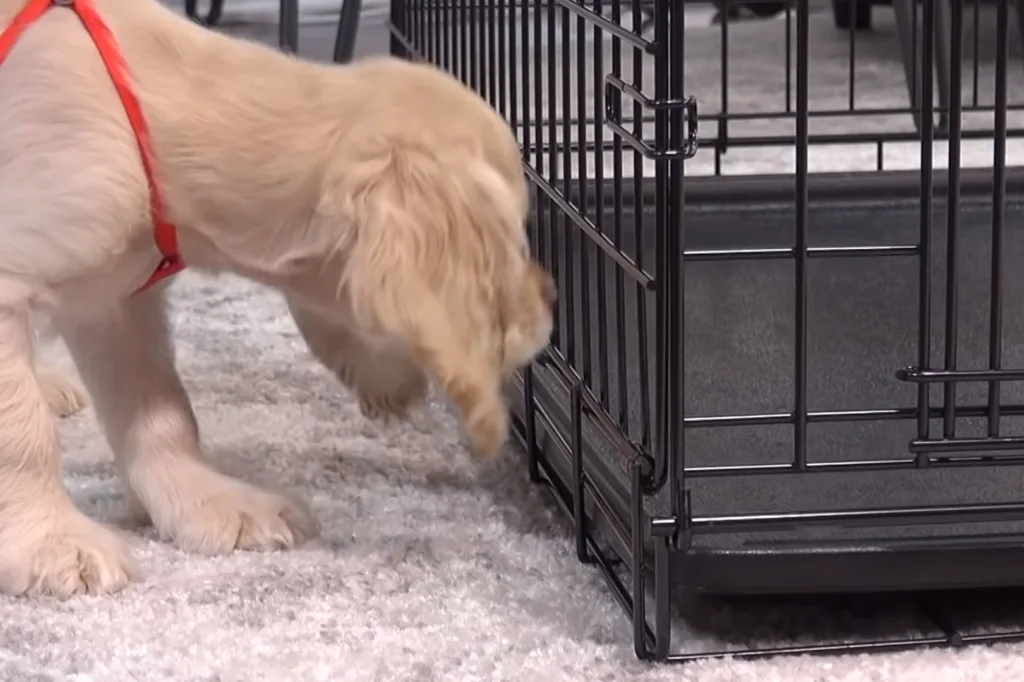
Once he’s settled down completely, you need to bring him out of his crate as a reward.
This can be for 1 or 2 minutes, during which you can take him outside for a potty break or just let him stretch his legs.
Remember to keep interactions such as petting to a minimum for now so he doesn’t start crying as soon as he’s put back into his crate.
Once his two minutes are over, it’s time to escort him back to his crate.
Comfort Them
Once he’s back in his crate for round 2, you can comfort him if he starts crying by talking to him in a soft tone.
Rest your hand back on the crate door or bars again to allow him to sniff and smell, as that can be incredibly comforting to a young puppy.
Do this until he settles down again.
Feed Them Treats
Training a puppy is all about positive reinforcement, and treats are the best reward you can offer a pup for good behavior.
Thus, once he settles down again, make sure to insert some treats into his crate as a reward for doing something that he doesn’t want to do.
You should also throw some treats in as soon as your puppy steps inside the crate. This will prove to him that entering his crate is a good thing.
Plus, swallowing treats can help a puppy relax even further, which will ultimately quicken the training process.
From this point onwards, your puppy will want to go back to his crate just to receive more treats.
And that is how you create a positive association between a dog and his crate.
Repeat the Process 5 to 10 Times
Repeat this same process 5 to 10 times or as often as it takes until your dog starts settling down as soon as he enters the crate.
This whole process is going to require plenty of patience from you, but the reward is definitely going to be worth it.
Once he learns to settle down by himself, give yourself a pat on the back because you’ve just completed the first stage of his crate training. You can now start letting him spend some time alone.
Gradually Increase Your Pup’s Alone Time
When we say leaving him alone for some time, we don’t mean leaving him alone for hours on end because he will eventually start crying again.
If the crying returns, then it’s your job to let your puppy learn to be alone at his pace.
That means staying close to him for longer periods and gradually increasing the amount of time he’s left alone.
Once again, it is essential that you practice crate training at a pace that your pup is comfortable with.
Create Positive Associations With the Crate
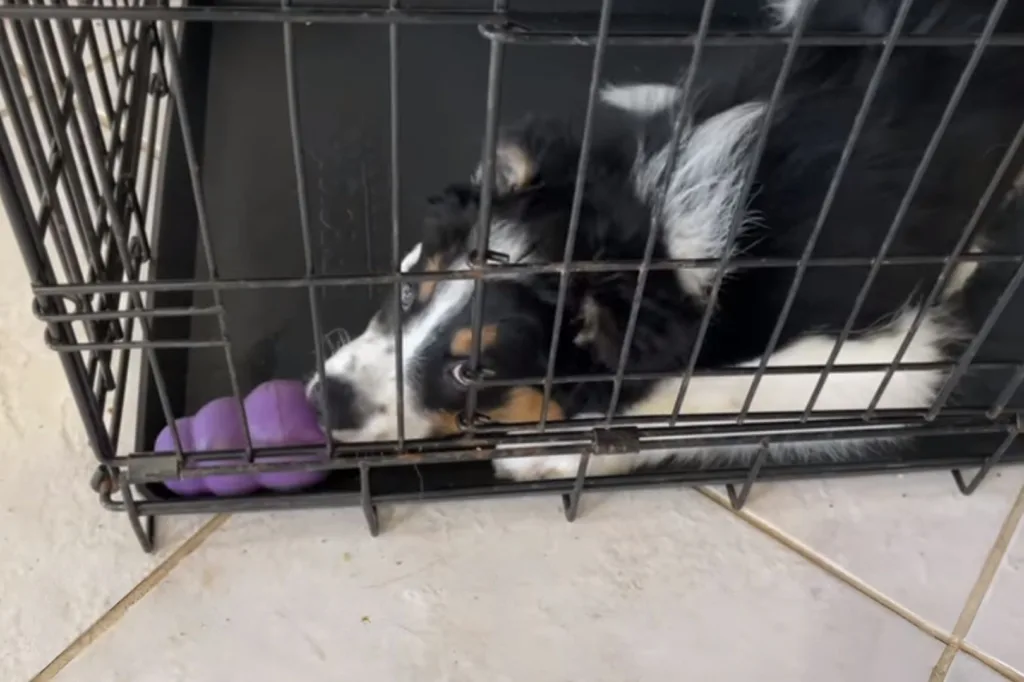
In order to make your pup love his crate, he has to recognize it as his Den.
That is only possible if you make a crate a cozy place to live by filling it with plush blankets, beds, and his favorite toys.
However, you also need to make sure that his bed and blankets are made of sturdy enough material to withstand his chewing.
So that he doesn’t accidentally swallow some fabric, you could also try playing calming music next to his crate.
Also, try putting the crate in a central room that you’re always passing through so that he can always detect your presence.
Provide Regular Bathroom Breaks
Puppies also cry when they need a pee break, in which case, you should feel lucky that they’re crying instead of just wetting their bed.
The younger your pup is, the more bathroom breaks he’ll need, and you must take him outside every time. Otherwise, he will make peeing in his crate a habit.
Exercise Your Puppy Thoroughly

Exercising your puppy is a great way to get him to accept his crate quickly.
Not only will your pup love you more for taking him on walks and playing with him, but he’ll be so exhausted by the end of it that he’ll fall asleep instantly after entering his crate.
However, you should know that a dog takes some time to get tired, especially if it’s a young, energetic puppy. The reward is definitely worth it, though.
Keep Them Busy in Activities
A pup’s crate should be a place of enjoyment and fun. Filling his crate up with his favorite toys is a start.
But if you truly want him to stay engaged while he’s in there, you have to keep introducing new toys into the mix.
Puzzle feeders are a great option as they keep your pup engaged while also offering him a treat as a reward for solving the puzzle.
You could also try a variety of sturdy chew toys, and dogs love wreaking havoc with them.
Never Use it as a Form of Punishment
If you don’t want the crying to come back, make sure you never treat his crate as a prison.
What this essentially means is that you should never lock your pup in his crate as a punishment for bad behavior.
You need to create positive associations between him and the crate, and that means rewarding his positive behavior and ignoring his bad behavior (not punishing it).
Keep Away!
All the while you’re trying to make the crate feel more homely and enjoyable, you should also gradually increase the time your pup spends alone in his crate.
In the early days, there’s going to be plenty of times when you’re woken up by your pup’s crying and have to go to him.
However, if you keep increasing his alone time, there will come a time when you get through an entire peaceful night’s sleep without him crying once.
How Long to Let New Puppy Cry in Crate: Should I Be Worried If He/She is Crying for Too Long?
During the early days of his new domesticated life, it is completely normal for your pup to cry in his crate, especially if he hasn’t acclimated to it yet.
Even after acclimating to it, your puppy can still whine uncontrollably the moment you leave sight.
However, if a considerable amount of time has passed and he’s still not accepting his training and crying constantly, then you should definitely consult a professional for additional guidance.
How Long to Let Puppy Cry it Out in Crate: Is it Appropriate to Leave Them in There?
Many dog parents can’t bear the thought of letting their little one cry, which can make crate training incredibly difficult for both them and their pups.
The only way for your dog to receive adequate crate training is if he’s left by himself to acclimate to his new surroundings.
Yes, he will cry initially, but after about 15 minutes, the self-soothing process will begin, and he’ll eventually stop. This is what’s known as tough love, and it can be extremely effective.
When Can You Leave Your Puppy in The Crate Without him Crying?
Tiring your puppy out before you put him in his crate is another great option if you want to stop him from crying.
However, that requires more effort than you think, as exercising a dog can mean taking him on long walks and playing with him consistently for 2-3 hours.
On the other hand, the end result is very much worth it because when he returns, he’ll want nothing more than to just let his crate bed swallow him up.
FAQs
How Long Should You Let a Puppy Cry in a Crate?
Dog behavior experts agree that your pup should only be left in his crate for 30 minutes at the start of his crate training.
You can then increase the time he spends in there in half-hour increments.
If he does cry during this time, make sure you wait about 10-15 minutes before going to him to make sure that it doesn’t feel like a reward.
How Long to Let Puppy Cry in Crate at Night: Will Puppy Cry First Night?
Puppies usually fall asleep at night around the same time as us humans.
So, on average, it’s likely that your puppy will only cry for about 5-10 minutes before falling asleep.
However, he may wake up a few more times in the night and whine because he needs a potty break.
Can a puppy cry itself to death?
No, it is not possible for a puppy to cry itself to death.
However, we wouldn’t advise leaving him in this state for too long as it may lead to him developing anxiety or behavioral issues in the future.
How Do I Get My Puppy to Stay in His Crate at Night?
The trick is to coax your dog into his crate as gently as possible. First, bring him to the edge of the crate using pleasant words and lots of petting.
Second, swing the cage door open so that there’s no chance he gets hit with it when he’s walking in.
Third, put some treats inside the crate to entice him into getting in.
You can then close the crate door and let him spend his night in there.
Will my puppy ever like his crate?
If you use positive reinforcement to prove to your pup that his crate is a safe and cozy sanctuary that only belongs to him, he will learn to love it over time.
The key is to just remain patient and never treat the crate as a form of punishment.
How long to let puppy cry in crate: When to take your dog out of the crate
Ask any professional, and they’ll tell you that the first crate training session should only last for 30 minutes.
You can then gradually increase the time he spends in the crate as you notice him start to get comfortable with his environment.
This time increase should also happen in 30-minute increments.
How Do I Stop My Dog from Whining in The Crate?
As your furry friend is learning to acclimate to his new environment, there are several things you could try to put him at ease.
These include making the crate cozy and inviting, staying close to him for his first few visits, and giving him some treats while he’s in there.
How Long to Let Puppy Cry in Crate: A Definitive Timeline
And with that, folks, we’ve reached the end of our guide discussing how long to let your puppy cry in his crate.
Hopefully, we’ve covered enough of the topic to convey our message of how important positive reinforcement is when crate training a new puppy.
Also, remember that your pup’s first visit to the crate should not last for more than 30 minutes, during which you can either keep the door open or closed.
Once you feel confident that he’s starting to get comfortable living in his crate, his crate time can then be increased gradually in half-hour increments.
If he starts crying during any of these spells, wait 10-15 minutes before going near his crate to calm him down.
Anyways, if you liked the content in this guide, make sure you check out some of our other guides related to doggy crate training. Have a nice day!



